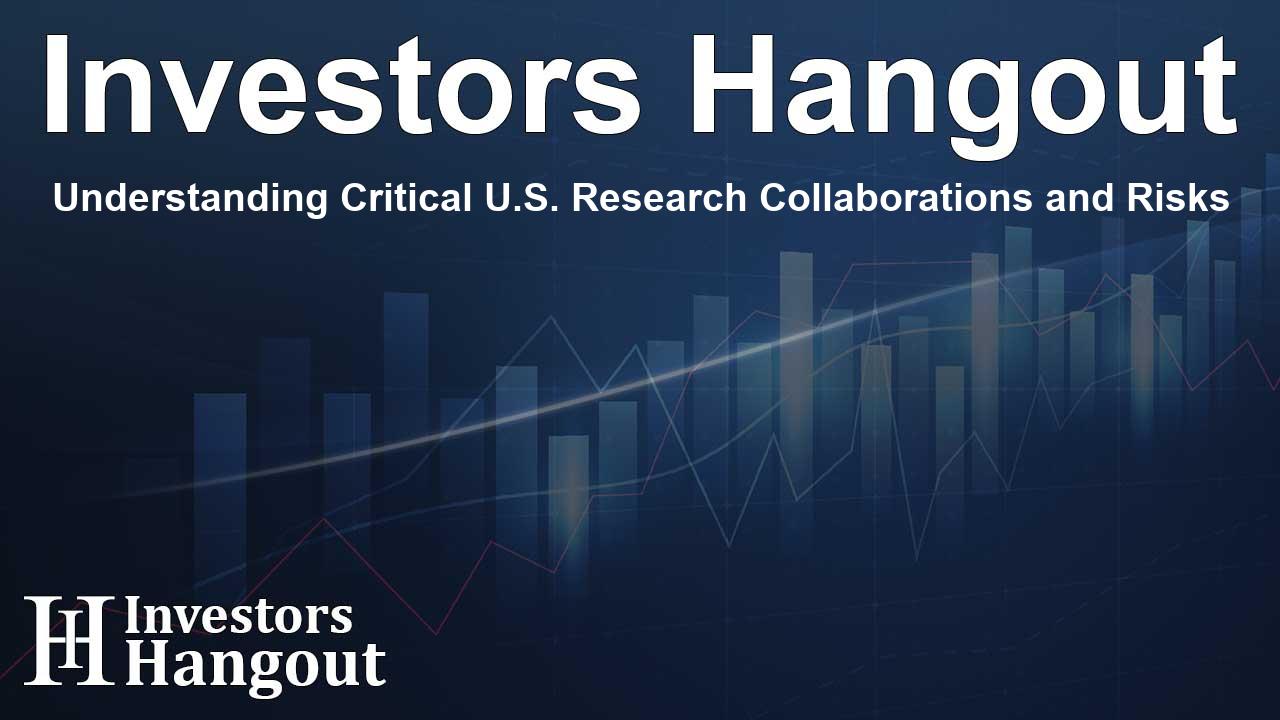Understanding Critical U.S. Research Collaborations and Risks

Understanding the Collaboration Landscape
In recent reports, Strider Technologies, Inc. has highlighted an alarming trend in academic research collaboration, particularly between U.S. organizations and those affiliated with the People’s Liberation Army (PLA). Strider's intense investigation uncovered over 100,000 instances of collaboration in STEM fields, revealing intense partnerships that could bolster China's military capacities.
The Threat to National Security
These collaborations are not just innocent research endeavors; they are linked to technologies that can create substantial strategic advantages for the PLA. The types of collaborations encompass advancements in artificial intelligence, quantum computing, aerospace technology, and systems critical for military application like hypersonic vehicles and directed energy weapons. Such innovations pose significant risks to U.S. national security as they may inadvertently contribute to the development of capabilities that challenge American interests globally.
Acknowledging the Instability
Greg Levesque, the CEO and Co-Founder of Strider, expressed deep concerns regarding how academic institutions are sitting on the front lines of technological breakthroughs that have profound implications. He stated, "Academic institutions are generating technologies that producers of military assets can leverage. However, the increasing engagements of U.S. researchers with potentially adversarial entities generate vulnerabilities to American security." ;
Exploring Key Collaborations
The report delineates how since 2017, there have been more than 23,000 publications resulting from over 100,000 collaborative instances with over 50 PLA-affiliated research institutes. This includes a diverse range of partnerships from leading universities to government laboratories across different states. What is concerning is the breadth of topics covered, which intersect with dual-use technologies capable of being utilized for both civilian and military ends.
Identifying Future Implications
As U.S. government attempts to identify and curtail such partnerships continue, the situation remains precarious. Between 2017 and the present, the collaborative activities, while witnessing a slight decline, reflect a troubling continuity. Such themes of collaboration can serve not just to advance shared knowledge but may ultimately facilitate the recruitment of specialized talent into the PRC's military apparatus.
Understanding Institutional Responsibility
In his remarks, Levesque elaborated on the necessity for U.S. universities to take responsibility regarding these partnerships. He remarked, "The focus must shift to establishing responsible research practices. It's time for university leaders to draw a line in the sand to prevent any further collaboration that feeds into China's military ambitions. This is not merely about innovation; it's about the integrity of our national security." ;
Expanding the Context of Global Research
Strider's findings encourage a deeper understanding of how international research dynamics affect national security. The organizations that are engaged in such collaborative efforts don’t typically function as standard institutions. Instead, many are explicitly charged with developing military capabilities, making these collaborations particularly sensitive and potentially perilous.
Building Awareness and Action
The goal of Strider's report is not to name and shame, but to foster a broader awareness that could lead to collective action against these vulnerabilities. This dialogue is essential in shaping a proactive strategy that could safeguard U.S. technological advancements from being misappropriated by hostile entities.
Conclusion
As the landscape of international research continues to evolve, the onus is on U.S. institutions and policymakers to adapt and respond effectively. With a military build-up that poses increasing challenges to global stability, the collaboration of U.S. universities—even inadvertently—underscores the urgent need for vigilance and proactive measures in the academic realm.
Frequently Asked Questions
What is the focus of Strider's report?
Strider's report investigates the extensive collaboration between U.S. research organizations and entities affiliated with the PLA, highlighting the implications on national security.
How many instances of collaboration were identified?
Strider's report disclosed over 100,000 instances of collaboration in STEM research since 2017.
What are dual-use technologies?
Dual-use technologies are those that can serve both civilian and military purposes, raising significant national security concerns when misapplied.
Why is it important to track these collaborations?
Tracking these collaborations helps identify vulnerabilities in U.S. research that could be exploited for adversarial uses, prioritizing national security.
What can be done to mitigate these risks?
Universities and policymakers should establish responsible research practices to curtail collaborations that might aid adversarial nations in their military endeavors.
About The Author
Contact Kelly Martin privately here. Or send an email with ATTN: Kelly Martin as the subject to contact@investorshangout.com.
About Investors Hangout
Investors Hangout is a leading online stock forum for financial discussion and learning, offering a wide range of free tools and resources. It draws in traders of all levels, who exchange market knowledge, investigate trading tactics, and keep an eye on industry developments in real time. Featuring financial articles, stock message boards, quotes, charts, company profiles, and live news updates. Through cooperative learning and a wealth of informational resources, it helps users from novices creating their first portfolios to experts honing their techniques. Join Investors Hangout today: https://investorshangout.com/
The content of this article is based on factual, publicly available information and does not represent legal, financial, or investment advice. Investors Hangout does not offer financial advice, and the author is not a licensed financial advisor. Consult a qualified advisor before making any financial or investment decisions based on this article. This article should not be considered advice to purchase, sell, or hold any securities or other investments. If any of the material provided here is inaccurate, please contact us for corrections.
